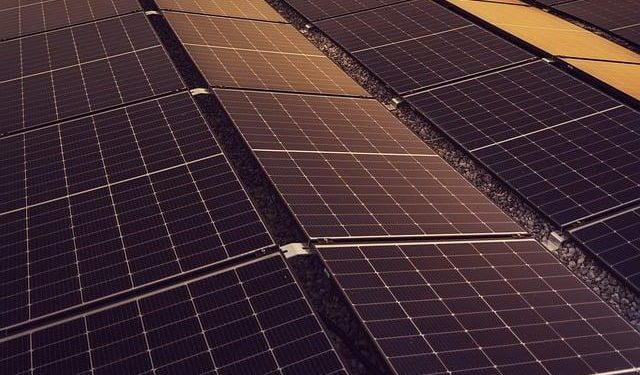In a world increasingly powered by the sun, the brilliance of solar panels shines brightly as a beacon of sustainable energy. Yet, as with all things under the sun, solar panels have a lifecycle that eventually dims. What happens then? Enter the fascinating realm of solar panel recycling—a process that not only breathes new life into old technology but also reinforces the very ethos of sustainability. As we peel back the layers of this burgeoning industry, we uncover a story of innovation and environmental stewardship. Here, we explore the intricate journey of solar panels from obsolescence to renewal, and the compelling benefits that this process holds for our planet and future generations.
Revealing the Journey: From Solar Panel Waste to Reusable Materials
The transition from discarded solar panels to reusable materials is a fascinating voyage, shedding light on the transformative power of innovation. At the heart of this process is the deconstruction of panels, meticulously dismantling each layer to extract valuable components. The glass is separated and refined, ready to be reincarnated into new products. Silicon wafers are delicately extracted, preserving their integrity for future use. Meanwhile, the metallic elements such as silver and copper are reclaimed, contributing to the circular economy.
- Glass Recovery: Up to 95% of the glass from solar panels can be reused, significantly reducing the need for new raw materials.
- Silicon Reuse: Recovered silicon is often refined and reused in new panels or other electronic devices.
- Metal Reclamation: Precious metals like silver and copper are extracted and reintegrated into manufacturing processes.
Embracing this recycling methodology not only reduces landfill waste but also conserves resources and lessens environmental impact. By transforming waste into a treasure trove of reusable materials, we pave the way for a more sustainable future, ensuring that the energy of the sun continues to power our lives in harmony with the planet.

Harnessing the Future: Environmental and Economic Benefits of Solar Panel Recycling
In an era where sustainability is at the forefront of global priorities, solar panel recycling emerges as a critical component in the renewable energy lifecycle. As solar technology proliferates, the inevitable end-of-life of panels poses both a challenge and an opportunity. By embracing recycling, we not only mitigate environmental impact but also unlock economic potential. The process involves several key stages: decommissioning, where panels are carefully removed; disassembly, which breaks down components; and material recovery, where valuable materials such as silicon, glass, and metals are extracted.
- Environmental Benefits:
- Reduction of landfill waste
- Decreased demand for raw material extraction
- Minimized carbon footprint
- Economic Benefits:
- Creation of new jobs in the recycling sector
- Development of a secondary market for recovered materials
- Reduction in costs for solar manufacturers
By integrating these processes into the broader energy ecosystem, we pave the way for a more sustainable and economically resilient future. As technology advances, the efficiency of recycling methods continues to improve, making solar panel recycling not just an option, but a necessity.

Innovative Techniques in Solar Panel Recycling: A Closer Look at Cutting-Edge Methods
In the quest for sustainable energy solutions, the recycling of solar panels has emerged as a vital frontier. Cutting-edge techniques are transforming this field, offering promising ways to reclaim valuable materials while minimizing environmental impact. One innovative approach involves advanced thermal and mechanical processes that efficiently separate glass, silicon, and metals. These methods ensure that the extracted components maintain high purity levels, making them suitable for reuse in new solar panels or other industries.
Another breakthrough method is the use of chemical etching and delamination. This technique delicately peels away layers of the panel, recovering pristine silicon wafers and silver, which are crucial for the production of new photovoltaic cells. Additionally, there are developments in biotechnological recycling, where specially engineered microbes break down complex materials, offering an eco-friendly solution to panel disposal. By integrating these innovative strategies, the solar industry can significantly reduce its carbon footprint, conserve natural resources, and promote a circular economy.
Strategic Steps Forward: Recommendations for a Sustainable Solar Panel Lifecycle
Transitioning towards a sustainable solar panel lifecycle requires a multifaceted approach that balances innovation with environmental responsibility. To begin, it’s crucial to integrate eco-design principles into the manufacturing process, ensuring that panels are built with materials that are easier to recycle and less harmful to the environment. This proactive step not only simplifies the recycling process but also reduces waste and energy consumption.
Furthermore, fostering a robust take-back infrastructure can significantly enhance the efficiency of solar panel recycling. By collaborating with manufacturers, policymakers, and waste management companies, a comprehensive network can be established to facilitate the collection and recycling of end-of-life panels. Key recommendations include:
- Developing local recycling facilities to minimize transportation emissions.
- Incentivizing consumers and businesses to return used panels through financial or service-based rewards.
- Implementing standardized labeling to improve sorting and recycling efficiency.
These strategic steps not only bolster the sustainability of the solar industry but also pave the way for a cleaner, more resilient energy future.
Closing Remarks
As we stand on the precipice of a sustainable future, the recycling of solar panels emerges as a beacon of innovation and responsibility. This intricate process not only promises to mitigate environmental impact but also underscores our commitment to harnessing renewable energy with minimal waste. By transforming end-of-life solar panels into valuable resources, we are crafting a narrative where technology and ecology coexist harmoniously. As we continue to refine and expand these recycling efforts, we illuminate a path forward—a path where the sun’s legacy is not only clean energy but also a cleaner planet. Let us embrace this journey with both optimism and resolve, ensuring that the light we capture today paves the way for a brighter, sustainable tomorrow.

































